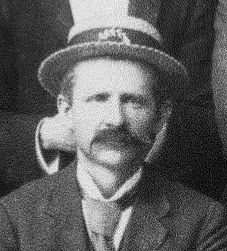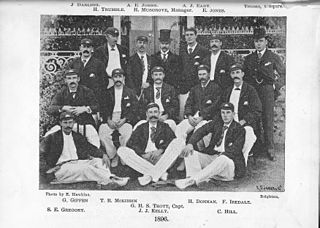Matches
The original itinerary had 13 matches. The match against Manawatu and the return matches against Canterbury and Wellington were added later. [3]
First-class matches are indicated in bold.
South Auckland used 15 of their team in the field.
- Auckland v Australians, Eden Park, Auckland, 6, 7, 9 February 1914. Auckland 251 and 186; Australians 658. Australians won by an innings and 221 runs.
Auckland's captain, Lancelot Hemus, scored 112 in the first innings. Waddy, Armstrong and Ransford all scored centuries for the Australians, who made 620 for 8 on the second day.
- South Taranaki XVI v Australians, Bayly Park, Hāwera, 10, 11 February 1914. South Taranaki XVI 232 and 99; Australians 271 and 61 for 2. Australians won by eight wickets.
The Australians batted on in the second innings after winning, finishing on 370 for 9.
- Wellington v Australians, Basin Reserve, Wellington, 13, 14, 16 February 1914. Wellington 201 and 71; Australians 124 and 149 for 3. Australians won by seven wickets.
Armstrong took 5 for 80 and 7 for 17.
On the first day 465 runs were scored for the loss of 20 wickets, off 108 overs. [4] The match was completed midway through the second of the three scheduled days. The Australians batted on after winning to fill up the second day, finishing on 175 for 8.
- Poverty Bay v Australians, Childers Road Reserve, Gisborne, 20, 21 February 1914. Poverty Bay 155 and 43 for 5; Australians 461. Drawn.
The Poverty Bay captain, Len McMahon, scored 87 not out, and was later selected in the New Zealand team for the second match against the Australians. It was the first visit of an international cricket team to Gisborne, and the Gisborne Borough Council declared a half-holiday for the first day of the match, a Friday, and gave a civic reception to the Australians on the Friday morning. [5]
On the first day, rain prevented play after the luncheon interval.
Trumper (293) and Sims (184 not out) added 433 for the eighth wicket in 181 minutes. It remains the world first-class record for the eighth wicket. [6] Trumper batted at number nine, held back on the Friday evening with the intention of providing a spectacle for the larger crowd on the Saturday, when the Australians made 545 for 4.
The Australians made 805 for 6 on the second day, reaching 900 in 325 minutes; Crawford scored 354, Trumper 135 and Cody 106. [7]
- New Zealand v Australia, Carisbrook, Dunedin, 6, 7, 9 March 1914. New Zealand 228 and 209; Australia 354 and 84 for 3. Australians won by seven wickets.
- Southland v Australians, Rugby Park, Invercargill, 10, 11 March 1914. Southland 156; Australians 709. Drawn.
Trumper, Collins, McKenzie and Cody all scored centuries. The Australians made 596 for 6 on the second day.
- Canterbury v Australians, Lancaster Park, Christchurch, 13, 14 March 1914. Canterbury 258 and 169; Australians 243. Drawn.
Although this was a first-class match it was scheduled for only two days. It was played as a benefit match for Lancaster Park. [8]
- Nelson XV v Australians, Trafalgar Park, Nelson, 18, 19 March 1914. Nelson XV 145 and 35; Australians 172 and 9 for 0. Australians won by 10 wickets.
- Wellington v Australians, Basin Reserve, Wellington, 20, 21 March 1914. Wellington 151; Australians 237. Drawn.
This was another two-day first-class match. Rain prevented play for much of the first day.
The Australians scored their 510 on the second day.
- New Zealand v Australia, Eden Park, Auckland, 27, 28, 30 March 1914. New Zealand 269 and 228; Australia 610 for 6 declared. Australians won by an innings and 113 runs.
Ned Sale scored 109 not out in New Zealand's first innings. Waddy, Crawford, Armstrong and Dolling scored centuries for Australia. Trumper scored a quick 81 in his last first-class innings. [9]







